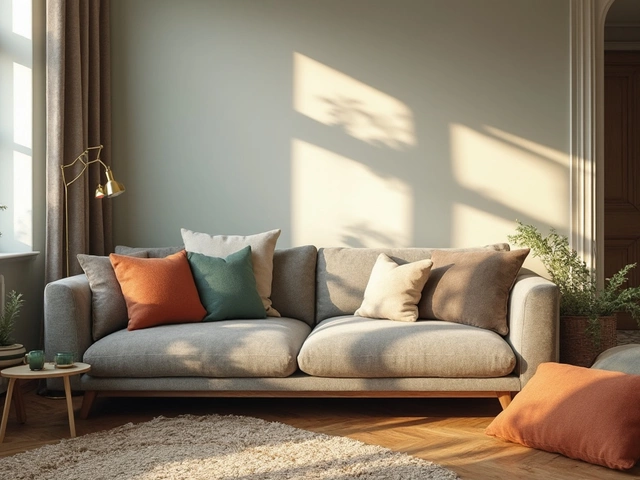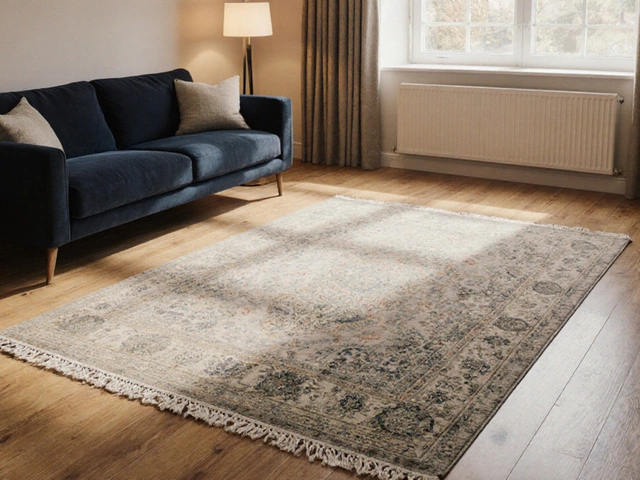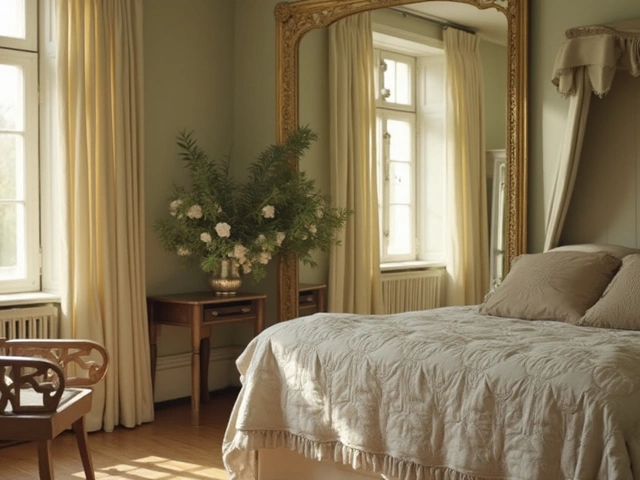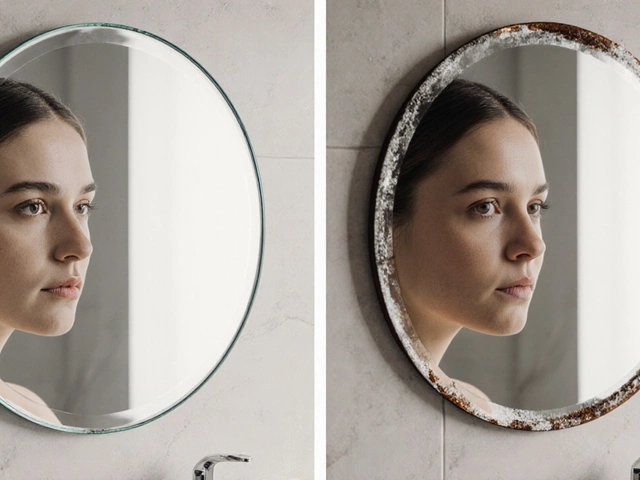How to Identify High-Quality Couches: Tips on Cushions and Craftsmanship
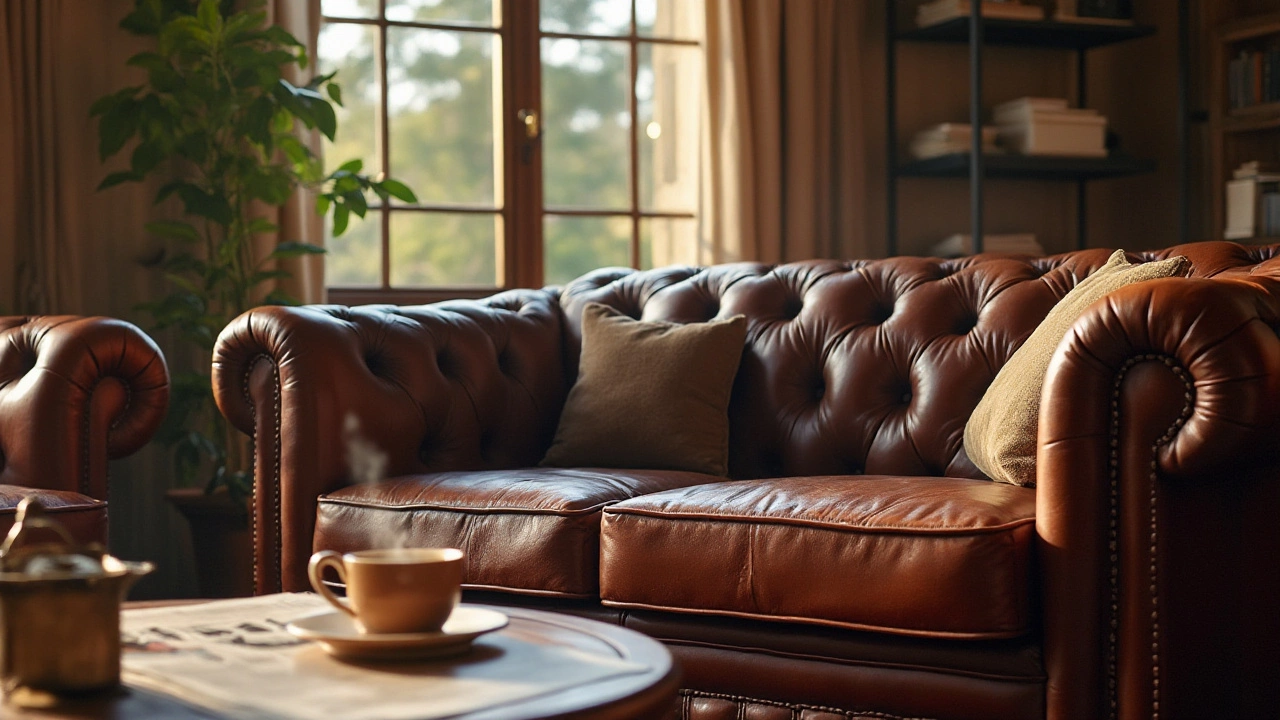
Choosing the right couch involves more than just picking a style or color. It's a commitment to quality and comfort that can transform your living space. High-quality couches do not only accentuate interiors but offer unparalleled comfort that stands the test of time. Stellar craftsmanship and superior materials become the linchpin of such investments.
A key component in this decision is the cushion—often underestimated yet crucial in defining a couch's longevity and comfort. Paying attention to what lies beneath the fabric is vital, as it distinguishes a fleeting purchase from a lasting one. Understanding these details empowers you to choose wisely, turning your living space into a haven of coziness and style.
- Importance of Quality in Couches
- Evaluating Cushion Materials
- Assessing Cushion Construction
- Understanding Frame and Support
- Testing for Comfort and Longevity
- Tips for Making the Right Choice
Importance of Quality in Couches
Investing in a high-quality couch can be instrumental in transforming a house into a home. It's not merely a place to sit; it's a symbol of comfort, style, and personal expression. The journey to find the ideal couch is often an adventure filled with choices that go beyond just aesthetics. When we consider a couch's quality, the attention typically shifts to materials and craftsmanship, where durability and comfort meet. A good couch has the potential to be a steadfast companion, witnessing countless family gatherings, lazy Sunday afternoons, and even the occasional nap. As such, choosing a couch crafted with care and precision should never be underestimated.
Quality couches often stand out due to their superior materials. From the frame to the upholstery, every component plays a crucial role. A strong frame is often crafted from kiln-dried hardwood, ensuring the couch stands firm through years of use. Such materials not only provide structural integrity but also influence the couch's ability to withstand daily wear and tear. Upholstery choices, whether natural or synthetic, contribute to the couch's lifespan and ease of maintenance, offering both aesthetic appeal and resilience against spills and stains.
The construction of the couch's cushions is another telltale sign of quality. A well-constructed couch cushion gives just the right balance of support and softness, a nuance that can significantly enhance your lounging experience. There are typically several layers involved, ranging from high-density foam for structure to softer outer layers for a plush feel. This sophisticated design ensures the cushion maintains its shape for years, providing prolonged comfort. Expertly constructed cushions also reduce the likelihood of lumpiness or sagging, common pitfalls in poorly made options.
Choosing a high-quality couch is a sustainable choice that often pays off in the long run. Investing in something that does not require frequent replacements is both economically sensible and environmentally conscious. The implications of constantly replacing low-quality furniture echo in our carbon footprints, while durable designs crafted from sustainably sourced materials suggest a mindful approach to living. As with many consumer goods, the adage 'you get what you pay for' rings particularly true in furniture. A thoughtfully chosen couch, though potentially costing more upfront, can offer decades of service with minimal deterioration.
As interior designer Nate Berkus once said, "Your home should tell the story of who you are, and be a collection of what you love." This sentiment perfectly encapsulates the idea of investing in quality. High-quality couches uplift the spirit of a room, resonating with the values and aesthetics of the homeowner, contributing both to comfort and narrative.
The importance of quality in couches cannot be overstated. Not only do they offer comfort, but they also enhance the visual appeal and functionality of living spaces. By investing in a well-crafted piece, one ensures a reliable fixture within their home. Understanding the elements that constitute quality helps in making informed decisions that reflect both personal taste and practical sense.
Evaluating Cushion Materials
When it comes to determining a couch's comfort level and durability, the type of cushion material used can make all the difference. It's not just a soft landing after a long day; it's a testament to the couch's quality and your future comfort. One popular choice among furniture makers is high-density foam, celebrated for its ability to retain shape and its plush yet firm support. Unlike lower-quality foams that easily succumb to pressure, high-density options recover swiftly, avoiding the dreaded sag.
However, not all foams are created equal. Some couches incorporate memory foam layers that contour to your body, a feature that may appeal to those seeking personalized comfort. Memory foam is renowned in the mattress world for reducing pressure points, and this advantage translates seamlessly to seating.
"A good cushion should not only feel good when you sit but should withstand years of daily use without showing wear," says renowned furniture designer, Jonathan Adler.
For those inclined towards natural options, feather and down cushions provide a soft and luxurious feel. Though they require regular fluffing and maintenance to retain their signature loft, the tactile experience is unmatched. Some designs use a clever combination of feather wraps around a foam core, offering both support and softness—striking the ultimate balance. If considering this option, remember that feathers may trigger allergies, so review your household's needs carefully.
The Role of Polyfill and Other Synthetics
For allergy-conscious consumers, modern polyfill and synthetic blends offer viable alternatives. As a hypoallergenic material, polyfill mimics the softness of natural fills without the sneezing. It's lightweight, easy to clean, and an economical choice for quality furniture. One trade-off is that it might not hold its shape as well as foams—requiring occasional adjustment. It's perfect for decorative pieces that won't endure heavy everyday usage like family room couches.
Considering sustainability? Manufacturers are moving towards eco-friendly materials, recycling polyester and innovating biodegradable options. With an increasing emphasis on environmentally conscious living, it's possible to find couches with cushions crafted from recycled fibers. This not only ensures longevity but also promotes green living.
Let's not forget hybrid cushions that combine several materials, bringing out the best qualities of each. With advancements in textile engineering, today's offerings blend synthetics with layers of foam or down to cater to diverse consumer preferences while maintaining a commitment to sustainability and long-term use. Scrutinize options, inquire about material density, and don't shy away from taking a seat to test before purchasing.
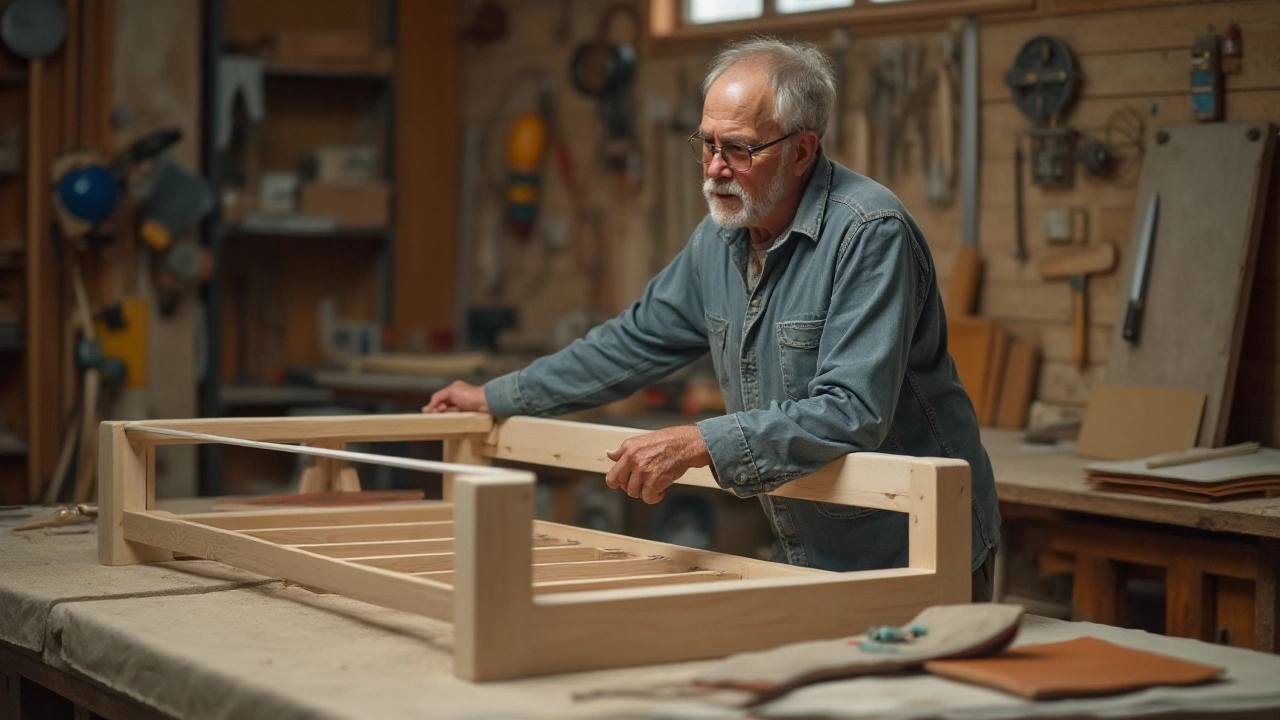
Assessing Cushion Construction
Cushion construction is at the heart of understanding what makes a couch truly high-quality. When examining this aspect, it's essential to delve into the core components: the cushion filling, the casing, and the support system. These elements collectively determine how the couch feels when sat upon and how it ages over time. The filling can be composed of various materials, each with its own merits. Foam is often used due to its durability and ability to maintain shape. However, not all foams are created equal; lookout for high-density foam as it provides better support and resilience. Cushion casings, usually made of down-proof ticking, are essential in maintaining the integrity of the filling. A well-made casing ensures that feathers or fibers don’t poke through, which can be uncomfortable and unsightly.
The support system for cushions, often overlooked, significantly impacts how the cushion will perform. Look for sinuous wire springs or eight-way hand-tied springs, which offer excellent support. These systems provide the necessary bounce and support, reducing the sagging that occurs over time with lesser-quality construction methods. The choice between these depends on your preference for firmness or softness and can influence the overall comfort and longevity of the couch.
"Quality is never an accident; it is always the result of intelligent effort." –John Ruskin
A reliable way to test cushion quality is to unzip a cushion cover and inspect the filling. You should see a solid core of high-density foam surrounded by softer material like down or fiberfill for added comfort. High-quality cushions always strike a balance between firmness and softness, providing support without feeling hard. This balance is critical because it dictates how well the cushion can recover its shape after someone sits on it. It also determines how long the cushion will last without looking flat and worn out.
Various facts and figures can further illustrate the distinctions in cushion construction quality. For instance, a cushion's ideal density rating is often between 1.8 and 2.5 pounds per cubic foot for optimal resilience and comfort. High-resilience foam cushions, typically more expensive, offer superior support and longer lifespan, a worthy consideration as you evaluate sofa options. Well-crafted cushions also feature channels within the fill that maintain an even distribution, preventing fibers from clustering or shifting unevenly.
Once you've educated yourself about cushion internals, practicing a simple at-home test can be insightful. Sit on the edge of the cushion and pay attention to how the cushion compresses and rebounds. High-quality cushions will compress gently and then smoothly return to their original shape. If it sounds like a daunting process to navigate on your own, don't hesitate to lean on the expertise of furniture salespersons or reviews. Your backside will thank you in the long run for the extra attention put into assessing couch quality through adept cushion construction.
Understanding Frame and Support
When delving into the qualities of a high-quality couch, one of the fundamental elements you must scrutinize is the frame and support system. This duo forms the backbone of the sofa, determining not just its durability but also its ability to provide sustained comfort. A couch is like a house; if the foundation is weak, everything else crumbles. Start with materials: hardwood is the gold standard, providing resilience and durability unmatched by softer woods or metal. Kiln-dried wood, specifically, is a preferred choice because the drying process reduces moisture, preventing warping or cracking over time.
Joints are equally pivotal in a couch’s quality. Dowel joints or corner blocks, reinforced with screws or brackets, promise an assurance of strength. Avoid couches held together merely by staples, nails, or glue, as they often signal corners cut during craftsmanship. A surprising but effective test is lifting one corner of the couch; if the adjacent leg lifts as you do, the frame has decent integrity and structure. This simple act can often be more telling than fancy jargon-filled marketing.
Springs and support need the same vigilance. Sinuous (also known as serpentine) springs are common in moderately-priced sofas and offer a fair balance of support and cost-efficiency. However, they can sag over time if not adequately weighted and spaced. Eight-way hand-tied springs, though more expensive and often found in high-end sofas, deliver superior comfort and resilience. These springs are carefully wound together, creating a matrix of support that can conform to weight and pressure over the years. Such techniques are hallmarks of high-level craftsmanship, favored by renowned furniture manufacturers.
Importance of Cushion Support
The interplay between frame and cushions cannot be understated when evaluating a couch's comfort. A robust frame must be complemented by supportive cushions to maximize its utility. Foam density in cushions should be checked; a density rating above 3.0 indicates high resilience foam, ensuring comfort and longevity. In some cases, high-density foam is wrapped with layers of softer dacron or batting for added plushness, creating a perfect harmony of firm support and soft touch.
Jacey Gershner, a respected interior designer, once remarked, "A sofa should embrace you like an old friend, reliable and steadfast." She emphasized that a durable frame with heavy-duty support springs is critical to maintaining that embrace. «
Considering these factors, it's clear that understanding the anatomy of a couch frame and support is not just about grasping what lies beneath the surface but also about recognizing the craftsmanship that stitches form and function together. For those investing in a couch, such insights can mean the difference between a piece of furniture that is merely decorative and one that becomes a cherished companion for years, providing comfort and warmth to any space it graces.
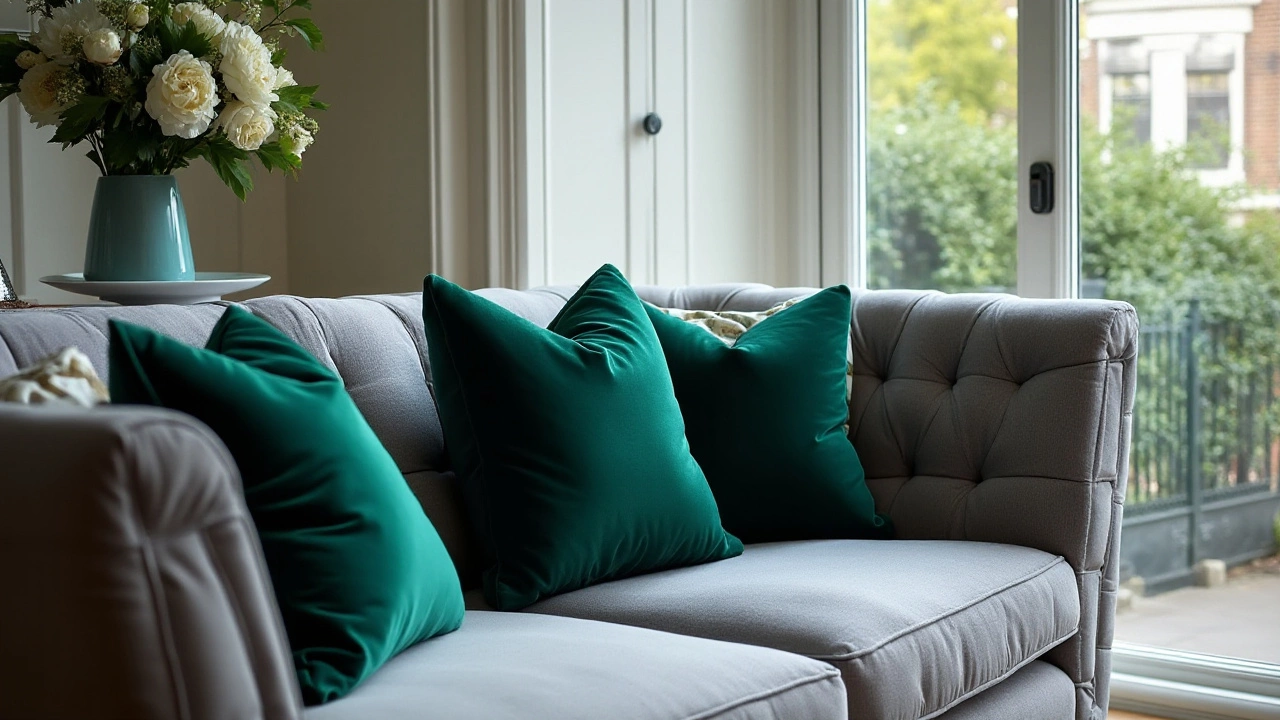
Testing for Comfort and Longevity
When it comes to selecting a high-quality couch, testing for comfort and longevity is no less than a mini adventure. This process is integral because couches are more than decorative pieces; they are sanctuaries of relaxation after long days. Engaging with the couch is necessary—more than merely eyeing it in the showroom. Sit, lounge, and even lie down to get a real sense of its comfort level. Observe how the cushions respond to adjusting postures. Are the cushions firm enough to support but still provide that plush feel that beckons you to unwind? A couch that flops down at every touch might suggest poor cushion quality. Dive into multiple seating positions to ensure it supports you just as well during a movie marathon as it does during an afternoon nap.
Pay attention to the noise factor, too. Squeaks and creaks often imply weaknesses in the structure or issues with cushion construction. If possible, ask about the stuffing density, as this can indicate its capacity to retain shape over time. Cushions often use materials like high-density foam. High-density variants provide prolonged existence but let your senses be the judge. An excellent piece will make subtle promises with comfort, whispering loyalty through silent, sound support. Feel the frame through the upholstery. A sturdy frame is the backbone of a sofa’s longevity, making hardwoods like oak or cherry discernible grades of quality which resist warping and cracking over years of use.
Don't hesitate to perform a little bounce test. While it might invite a few amused glances, it helps ascertain the couch's resilience under dynamic conditions. The stability test is essential to evaluate how it withstands weight distribution shifts, not only from everyday use but those impromptu dance-offs and pillow fights too. You may find that sofa arms and backs support, preventing cushions from succumbing to those ominous dips and valleys over time. As per furniture expert Laura Cerwinske’s words,
"A well-crafted couch offers an embrace that retains its charm amidst the changing tides of wear and tear."Let’s talk expected longevity. Quality craftsmen design couches to last around fifteen years or more, with proper care. Anticipate visible signs of wear and sagging cushions in couches that fail to deliver. To avoid these pitfalls, consider sofas from reputable brands known for their commitment to quality. They usually offer at least ten-year warranties, covering frames and springs—a testament to their confidence in durability.
Cushion Care
Even the finest quality cushions require attention for maximum lifespan. Routine fluffing and flipping are time-tested practices to maintain their firmness. Rotating them periodically can also prevent fabric from aging unevenly, ensuring every nook retains its original luxury. Additionally, upholstery covers made from durable yet comfortable materials like linen or leather can be crucial in managing wear and tear.
Consider asking for maintenance tips directly from the retailer, especially for intricate cushion materials. Regularly cleaning and moisturizing leather, for example, can drastically extend its beauty and life, as can using appropriate vacuum attachments for fabric-upholstered couches. Proper padding care not only reinforces longevity but keeps comfort levels consistent, showcasing the brilliance of expertly curated couch quality and allowing couch aesthetics to remain timeless, much like the relaxation they provide in spaces we cherish.
Tips for Making the Right Choice
When it comes to selecting a high-quality sofa, numerous factors come into play, each contributing to the piece's functionality and aesthetic appeal. Initially, consider your lifestyle and how the couch will be used. This is crucial in determining the kind of durability you need from your sofa. If you have children or pets, for instance, investing in easily washable materials or colorful patterns that conceal stains might be wise. A bustling household requires a sturdy frame and durable, tightly-woven fabrics that can endure constant use. A more serene environment might allow for more delicate upholsteries, such as velvet or linen, which add elegance but require more attention to maintaining.
Next, think about the type of cushions that will best suit your needs. Don't just glance at the exterior; unzip sofa cushions to examine the filling. Polyurethane foam is common due to its affordability and cushioning abilities, however, high-resilient (HR) foam offers long-lasting firmness and support, which ensures your sofa does not flatten quickly. Experts often recommend memory foam for its form-fitting attributes that provide comfort, although it comes with a higher price tag. When comfort is paramount, feather or down-wrapped foam cushions represent the luxurious end of the spectrum, offering a level of plushness many find irresistible. "A sofa is more than just a piece of furniture; it's where comfort and aesthetic intersect," explains renowned interior designer Emily Henderson in her home décor critique.
The frame of a couch is another crucial element; a weak frame can render the most picturesque sofa into an expensive disappointment. Kiln-dried hardwood is the gold standard for durability and stability, offering longevity that particle board or softwood cannot. Test the frame by lifting one corner: if the opposite leg also lifts off the floor, the frame is sturdy and resilient. Joints should be glued, dowelled, and screwed together, as opposed to staples, which can falter over time. Consider the suspension systems too. Sinuous spring systems, made of tempered steel, are a staple of high-quality sofas and provide enduring support.
Color and style selection isn't just about matching decor but also affecting mood and perception of the space. Different styles from modern minimalism to traditional chesterfields impact the room's ambiance. That said, neutral hues and classic designs often serve as adaptable canvases for evolving aesthetics. However, don't shy away from bold colors or unique textures if these resonate with your personality. According to recent statistics, sofas in deeper shades of blue and green have surged in popularity, reflecting a trend towards richer and more comforting interior palettes.
Finally, measure your space thoroughly before selecting a couch. It's a practical mistake to buy furniture that becomes an obstacle; therefore, understanding room dimensions, along with door and stairway clearances, is vital. Consider modular or sectional sofas to provide flexibility in tight or awkward spaces. Such pieces can be rearranged to fit different layouts or accommodate guests. Remember, the best sofa is not just one that fits your space physically but also suits your emotional and practical lifestyle needs. As you embark on this decision, these pointers aim to guide you toward a choice that brings long-term satisfaction and joy.

